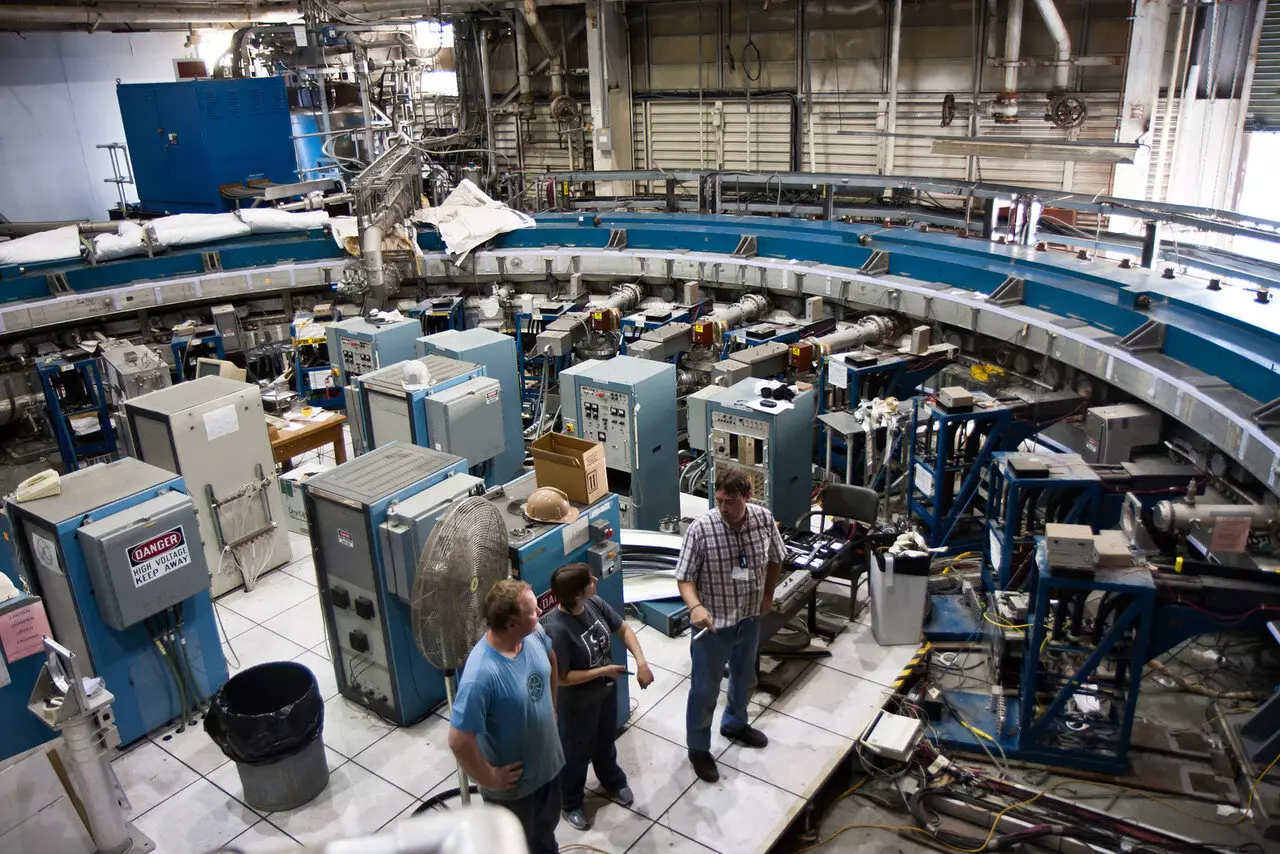Muons, often referred to as “heavy electrons,” hold a unique place in the realm of particle physics. These elementary particles, with masses 207 times greater than that of electrons, possess identical electric charge and spin properties, making them intriguing subjects for research. Since their discovery in 1936, courtesy of physicist Isidor Isaac Rabi, muons have challenged scientists to delve deeper into our understanding of fundamental particle interactions. A recent breakthrough from the Muon g-2 Collaboration is positioned to further our knowledge of the fundamental forces operating in the universe.
The Muon g-2 Collaboration’s latest experiment at Fermilab has yielded unprecedented results concerning the magnetic moment of muons. Utilizing a particle storage ring, muons were accelerated to nearly the speed of light while subjected to a magnetic field roughly 30,000 times stronger than Earth’s magnetic field. As the muons traversed the 7.1-meter diameter ring, they exhibited precession—a phenomenon where their spin axis rotates analogous to a spinning top.
The significance of this experiment lies not just in the magnetic moment measurements but also in the delicate interplay between the muons and virtual particles in the underlying vacuum. By analyzing the precession frequency in conjunction with the cycling frequency around the storage ring, researchers achieved an astonishing precision of 0.2 parts per million for the muon’s anomalous magnetic moment. In comparison to earlier experiments, this measurement more than doubles the precision of previous findings, marking a significant enhancement in experimental particle physics techniques.
The pursuit of precise measurements of muons’ magnetic moments serves as a gateway to understanding physics beyond the current Standard Model. While the prediction of the muon’s magnetic moment is grounded in quantum electrodynamics (QED), more complex contributions must be accounted for. These include inputs from electroweak and hadronic effects—each adding layers of intricacy to the theoretical framework.
The expectations for muons are uniquely elevated due to their increased mass which offers heightened sensitivity to potential new physics interactions. Discrepancies between experimental results and theoretical predictions could unearth signs of phenomena suggested by advanced theories like supersymmetry and string theory. However, the calculation of the hadronic contribution to the muon’s magnetic moment remains a significant roadblock, as it relies heavily on the knowledge and understanding of strongly interacting particles.
The meticulous approach adopted by the Muon g-2 Collaboration to compile data from numerous experimental runs is noteworthy. Between March 2019 and March 2020, teams managed to collect data spanning three years with careful control over systematic errors—conditions that might otherwise distort the findings. Each time a burst of muons was injected into the storage ring, intense scrutiny was applied to account for losses, fluctuations in magnetic fields, and other perturbative factors.
Despite achieving a landmark result, the collaboration acknowledges that a direct comparison between experimental measurements and theoretical predictions is still hindered by unresolved issues in understanding hadronic interactions. In this context, ambient uncertainties necessitate further experimental evidence, and the collective team anticipates that an additional three years of data will enhance both the statistical robustness and accuracy of their findings.
As scientific research continues to evolve, the findings from the Muon g-2 Collaboration could have far-reaching consequences. Not only do they contribute to our classical understanding of particle physics, but they also foster curiosity about what lies beyond conventional theories. The muon, with its exquisite sensitivity to new physics, could serve as a linchpin in unraveling the mysteries of the universe, pushing the boundaries of standard models and theoretical frameworks alike.
Future endeavors in this line of investigation will likely examine muon behavior under diverse conditions, broadening our insight into potential anomalies. High precision measurements and advancements in theoretical predictions could lead to revolutionary scientific breakthroughs, perhaps hinting at the existence of new particles or unknown forces.
The meticulous efforts of the Muon g-2 Collaboration not only mark a monumental leap in precision measurements but also breathe new life into the quest for deeper understanding in the world of fundamental particles and the forces that govern them. The future of muon research is bright, promising more discoveries that could redefine our understanding of the cosmos.


Leave a Reply